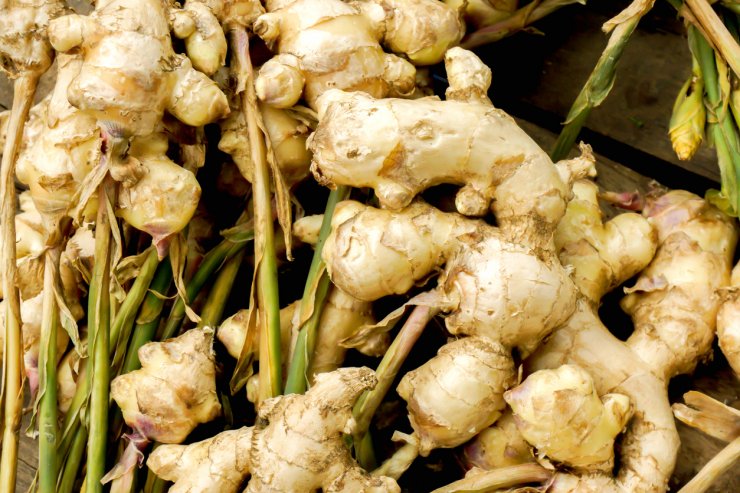
Well-developed ginger rhizomes.
Ginger plants are heavy feeders but lackluster scavengers; they want their nutrients and they want them right there, right now! If your soil is already nutrient-rich and you’ve mixed in some healthy compost, you may not need a lot of fertilizer, but you will need some. If you’re growing ginger in an area that gets a lot of rain, it’s especially important to fertilize your ginger on a regular basis, because all that rainfall will have carried off some of the yummy nutrients your ginger craves.
Use a low-nitrogen fertilizer on your ginger, something like a 10-20-20. Too much nitrogen will encourage too much foliage growth—which will, in turn, reduce the size and number of your rhizomes.
There are several points in the life of a ginger plant when it’s a good idea to add a little fertilizer:
- At planting
- Each time you notice the plant has grown a little and you can spot some pink at the base of the stem—that’s fresh rhizome growth. Lay down a little fertilizer about 12 to 14 inches away from the plant; applying fertilizer directly to the plants can damage them. While you’re there, hill a little fresh soil around the base of the stem. You want to be sure to cover the growing rhizome; rhizomes are not sun lovers!
- Every six to eight weeks throughout the season (which lasts for about a year, remember), you can fertilize with a seaweed extract or fish emulsion.
Once the ginger has started flowering, you can boost your soil with a potassium fertilizer to encourage the plants to develop plump, juicy rhizomes.
The best practice is to keep an eye on the leaves of the plant, and keep an eye out for new, pink rhizome growth. If you need just one all-purpose fertilizer, high-quality chicken manure is a good choice.
Do you fertilize your ginger plants? What type of fertilizer do you use? How often do you fertilize? Please tell us exactly how and when you fertilize your ginger plants.


 Previous
Previous

